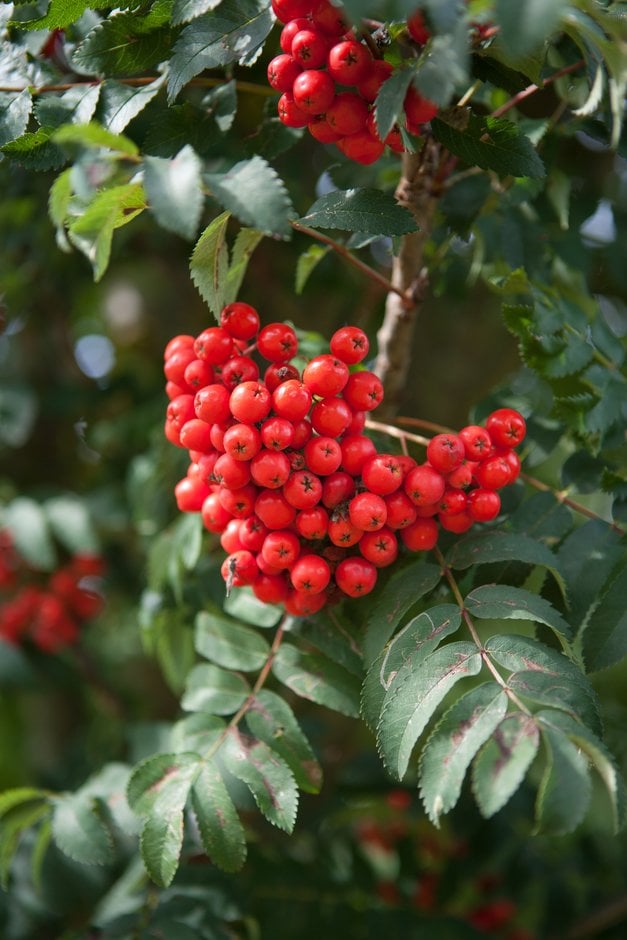Sorbus aucuparia 'Fastigiata'
rowan 'Fastigiata'
A slow-growing tree, up to 6m high, narrowly-conical when mature, with dense, stout, upright branches and large pinnate leaves with 11-15 serrated, dull dark green leaflets. Clusters, up to 12cm across, of creamy-white flowers with a musky scent appear in late spring or early summer and are followed by heavy clusters of dark sealing-wax-red berries, each 1cm across, in late summer and early autumn
Synonyms
Sorbus americana 'Nana'Sorbus decora 'Nana'
see moreSorbus 'Fastigiata'
Sorbus decora var. nana
Sorbus scopulina misapplied
Size
Ultimate height
4–8 metresTime to ultimate height
20–50 yearsUltimate spread
2.5–4 metresGrowing conditions
Moisture
Moist but well–drainedpH
Acid, Alkaline, NeutralColour & scent
| Stem | Flower | Foliage | Fruit | |
| Spring | Brown Grey Silver | Cream | Green | |
|---|---|---|---|---|
| Summer | Brown Grey Silver | Cream | Green | Red |
| Autumn | Brown Grey Silver | Orange Red Yellow | Red | |
| Winter | Brown Grey Silver |
Position
- Full sun
- Partial shade
Aspect
South–facing or North–facing or West–facing or East–facing
Exposure
Exposed or Sheltered Hardiness
H6Botanical details
- Family
- Rosaceae
- Native to GB / Ireland
- No
- Foliage
- Deciduous
- Habit
- Columnar upright
- Potentially harmful
- Fruit are ornamental, not to be eaten. Wear gloves and other protective equipment when handling. Pets: Fruit are ornamental, not to be eaten - see the HTA guide to potentially harmful plants for further information and useful contact numbers
- Genus
Sorbus can be deciduous trees or shrubs with simple or pinnate leaves and clusters of small white or pink flowers, followed by white, yellow, pink, red or brown berries; some have fine autumn colour
- Name status
Accepted
How to grow
Cultivation
Grow in moisture-retentive, humus-rich, well-drained soil in sun or light dappled shade; will grow in a wide range of soils but prefers acidic or neutral soil
Propagation
Propagate by softwood cuttings, treated with hormone rooting powder and rooted in a closed case with bottom heat or under mist in spring and early summer, by budding in summer, or by grafting in summer or winter. Although not all cuttings will root readily, in general, plants grown on their own roots produce better specimens
Suggested planting locations and garden types
- City and courtyard gardens
- Coastal
- Cottage and informal garden
- Wildlife gardens
- Hedging and screens
Pruning
Pruning group 1 but no pruning is usually required
Pests
May be susceptible to aphids, scale insects, pear blister mite, red spider mite and sawfly larvae
Diseases
May be susceptible to fireblight, apple canker, silver leaf and honey fungus
Get involved
The Royal Horticultural Society is the UK’s leading gardening charity. We aim to enrich everyone’s life through plants, and make the UK a greener and more beautiful place.
